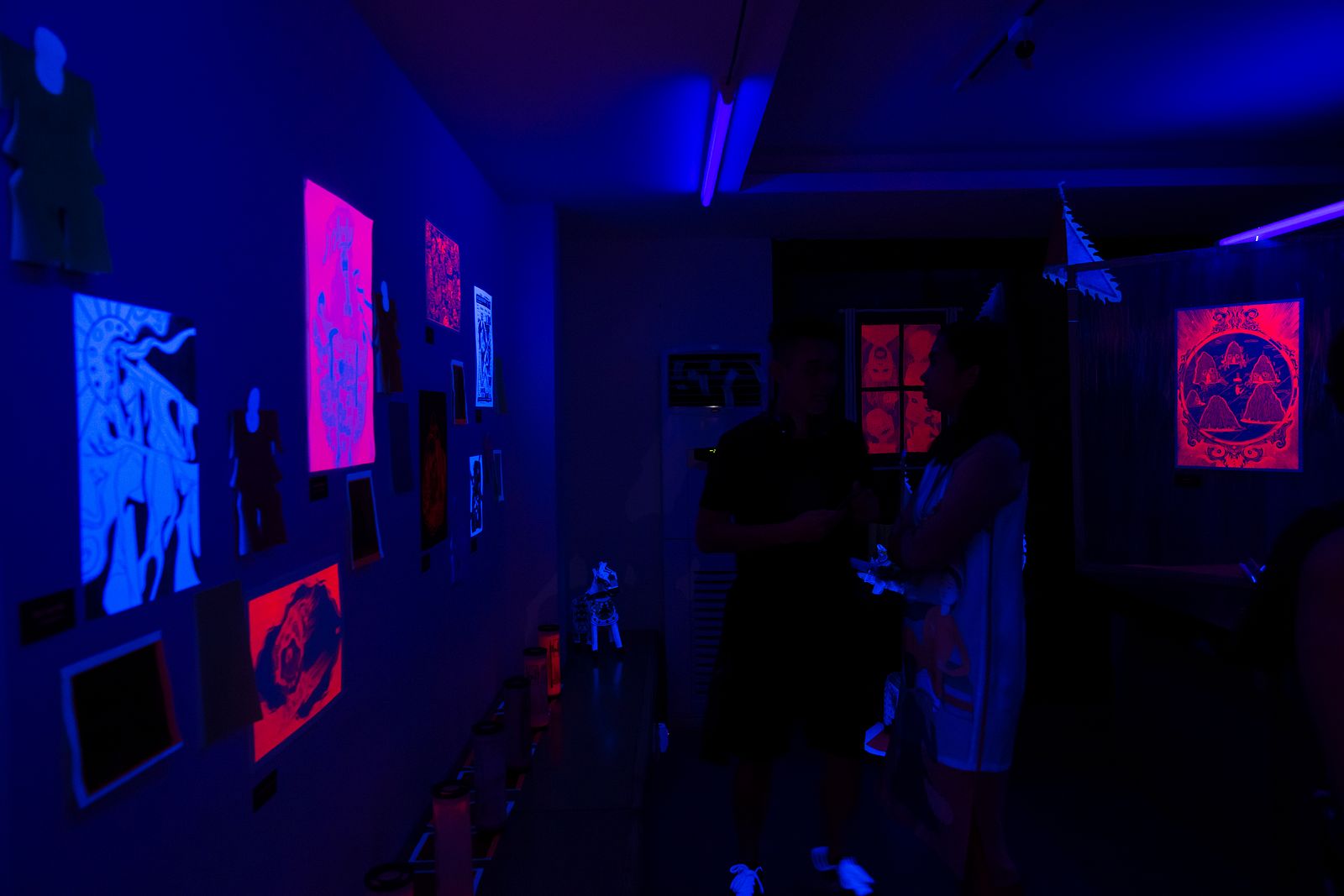“A collision of literature and art on the pages” is the descriptor that Bar De Force, a Vietnamese independent press, gives itself.
Founded toward the end of 2019, the publishing collective aims to bring forth contemporary voices and artistic reinterpretations of prints and presentations. Bar De Force’s very first publication, Goddamn Life Dreamers, was penned by its co-founder, Nguyễn Thúy Hằng, a visual artist, poet and writer based in Saigon.
Instead of condensing the author’s 11 short stories, which were written between 2002 and 2016, into one single collection, Bar De Force divided them into several chapbooks and published them one by one. The seven-volume series was released in full over a span of two years.
“We hope to experiment more with chapbooks, a type of small booklet,” says Dương Mạnh Hùng, a member of Bar De Force. “Short story collections have long been the publishing industry’s go-to medium, but with this series, we’re turning to a different creative outlet to offer readers something new.”
As a translator, Hùng has contributed to the Vietnamese adaptation of foreign language books, namely A Sand County Almanac by Aldo Leopold, Exit West by Mohsin Hami, and Farming of Bones by Edwidge Danticat; and the English adaptation of Nguyễn Ngọc Tư’s magnum opus Cánh Đồng Bất Tận (Endless Field).

Visual-wise, Goddamn Life Dreamers volumes are inspired by the likes of Penguin’s Little Black Classics and Vintage Minis, a curated selection of short and notable titles from the world’s most eminent writers and scholars, compiled in booklets of 60 to 160 pages. The design is meant to provide readers who are curious about, or overwhelmed by, any author’s complete and extensive oeuvre, with an introductory passage to their classics.
Indeed, a single short, light and poignant chapbook can do wonders for realigning the readers’ focus. With constant disruptions from electronic devices and information sources, a page count in the latter hundreds can seem like an uphill mental battle for some. “I’ve always thought that the feat of finishing a book, even if it’s very thin, has its own merits,” Hùng says with a smile. “It doesn’t matter how thick or thin that book is, what counts that you were able to feel, to absorb, to derive something from it.”

The joy of unpacking a new book is amplified with the union of the written language and practical art. With every short story, Nguyễn Thúy Hằng and the team invites young local contemporary artists to create an illustration based on its plot to “showcase how artists envision the characters or the setting, as well as how they convert different aspects of the story from its linguistic to visual form,” notes the preface of each publication.
“The amalgamation of art and literature has got my full love and attention,” says Nghĩa Đặng, an artist who has worked with Bar De Force. “There, the two abstract forms of human expression have their own unique ways of connecting and expanding which, in order to form, require a sense of independence and respect from both. In the pages of Bar De Force, I found that — and it's not something that's easily found in any other publications.”

Lê Trang Nhung's illustration for It's all lies. It's all delusional..
For each title, Bar De Force publishes only 100 copies. And as the collective operates on a non-profit model, all sales go back to cover the printing costs. The limited batches mean that Bar De Force gets to take their time to perfect not only the substance of the books but also the design and quality of their exteriors.
“Hằng and the team’s priority is to always pick the best paper, the color that best matches the tone of the book. From the shadow and the gloss of the cover to the embossed and debossed letters, everything is to make the titles and the images come out in its sharpest, tidiest form,” Hùng says. “Bar De Force considers each book a complete work. When we feel that a book is at its best potential, we allow it to be printed. Once it comes out, it is something that distills all the efforts, quintessence, and creativity from the individuals that took part in that publication.”

Nhung Đinh's artwork for In a Grossly Boring Town.
As a newly founded press, Bar De Force has latched itself on a rather ambitious goal — to bring contemporary Vietnamese voices to the greater world of literature. Thus, in every copy of Goddamn Life Dreamers, an accompanying English translation is included, brought to international readers by young local translators, one of whom is Nam Đỗ.
"The translators who joined Bar de Force from the start were friends who already knew each other, they shared a need and joy of writing, a passion for language, and a few other things in common, both in life and in ideology," he says. "I have translated poems and read stories by Nguyễn Thúy Hằng for quite some time and I just love the imagery, the narratives and the language in her works. Thanks to the continuous communication I have with her [the author], which shows nothing but respect for my autonomy as a translator, I feel a little more confident when tackling her stories, of which original meaning is already hard to fully grasp, not to mention re-rendering it into another language."

Bar De Force's books in Sweden.
On outbound trips to Asia or Europe, whether to attend a conference on interculturalism, a literary festival or an art residency program, Hằng and members of Bar De Force carry with them copies of published books, which they can whip out to show any literature and art enthusiasts they encounter or leave behind at local libraries and creative spaces so visitors can enjoy a good read from across the globe.
Most recently, Bar De Force and Gantala Press, another independent publisher from the Philippines, received support from Manila’s Japan Foundation to carry out "When we are: When the storm comes," an international collaboration to create a trilingual — Vietnamese, English, and Tagalog — virtual publication, featuring "female artists, writers, and social activists from both countries, who previously had to fight for their own and their community in arduous and disadvantaged situations," the most formidable being the COVID-19 pandemic.

“I think a press should strike a balance between the classics, the popular stuff and the award-winning titles to ensure that the community always has access to a diverse spectrum of publications, of writers from every country, ethnicity, race, economic standing and walk of life,” Hùng concludes.
"In a society where nothing is certain, and uncertainty is the only constant, young writers will continue to explore such worldly nuances with their writing power. We hope to work with and highlight the voices of those who do so in places other than Saigon and Hanoi. I think that will help Bar De Force expand its creative and experimental horizon, and above all, create a more diverse pool of choices for national and global readers keen on Vietnam’s contemporary literature."

















